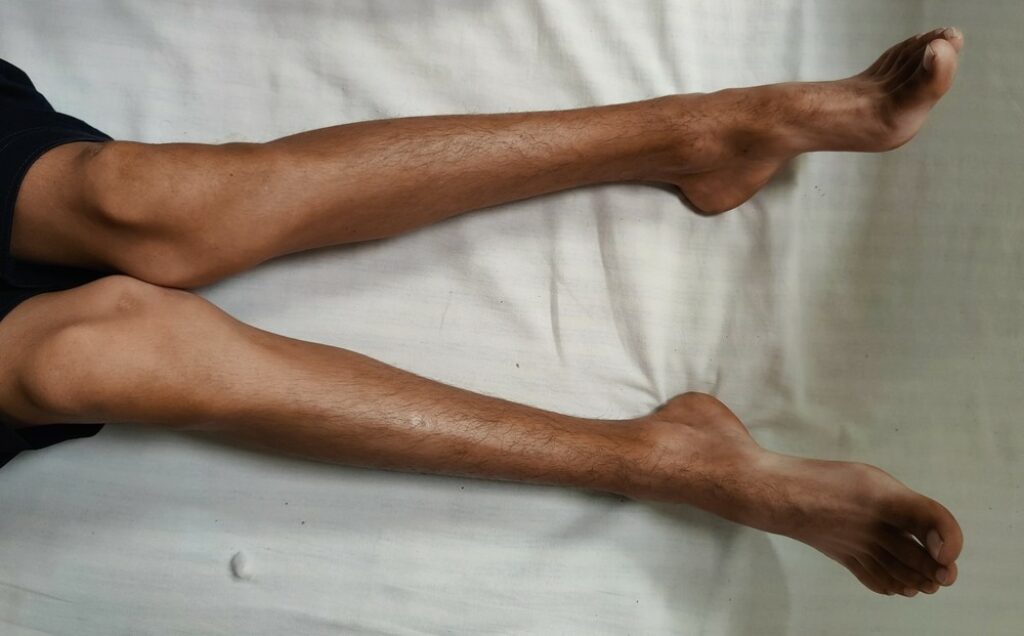
Rickets
Not as well known as some other medical conditions, Rickets affects the strength and growth of bones. It is caused by a severe, ongoing deficiency of Vitamin D and other essential nutrients. It can occur in adults, but it usually affects children.
Related Topics (Sponsored Ads):
Rickets is a medical condition primarily affecting children, characterized by the softening and weakening of bones, which can lead to deformities and fractures. The condition arises mainly due to a deficiency in vitamin D, calcium, or phosphate, essential nutrients for bone health. If it is not promptly treated, the consequences can have a significant impact on the individuals health and quality of life. Fortunately, there are several treatment options that can counteract it.
Below you will learn everything you need to know about Rickets and how to effectively treat it.

Overview
Vitamin D is crucial for the absorption of calcium in the intestines. Without adequate levels of D, the body cannot maintain sufficient calcium levels in the blood, leading to weakened bones. Rickets can also be caused by genetic disorders that affect the metabolism of these nutrients, resulting in a condition known as hereditary rickets. The consequences of rickets can be severe, impacting a child’s growth and development, and potentially leading to lifelong complications if not addressed promptly.
At-Risk Populations
Certain demographic groups are more susceptible to developing rickets. Infants and young children are at the highest risk, particularly those who are exclusively breastfed without adequate vitamin D supplementation. Breast milk typically does not contain sufficient vitamin D, making it essential for breastfeeding parents to ensure they have adequate levels themselves.
Additionally, children who have limited exposure to sunlight, such as those living in northern latitudes or those who spend most of their time indoors, are at increased risk.Dark-skinned individuals are also more vulnerable, as higher melanin levels reduce the skin’s ability to synthesize vitamin D from sunlight. Other risk factors include dietary restrictions, such as strict vegan diets or lactose intolerance, which can lead to inadequate calcium and vitamin D intake.
Children with certain medical conditions, such as celiac disease or cystic fibrosis, may also have impaired absorption of these vital nutrients, further increasing their risk of rickets.
Diagnosis
Diagnosing rickets typically involves a comprehensive evaluation by a healthcare professional. The process begins with a physical examination, where the doctor looks for signs of bone deformities, such as bowed legs or a soft skull. A detailed medical history is also taken, focusing on dietary habits, sun exposure, and any underlying health conditions.
To confirm the diagnosis, several tests may be conducted. Blood tests are essential for measuring levels of calcium, phosphorus, and alkaline phosphatase, an enzyme that often rises in cases of rickets. Imaging studies, such as X-rays, can reveal characteristic changes in bone structure, including loss of calcium and deformities. In rare cases, a bone biopsy may be performed to definitively diagnose rickets, although this is not commonly needed.
Symptoms
The symptoms of rickets can vary in severity and may develop gradually. Common physical manifestations include bone pain or tenderness, muscle weakness, and delayed growth or motor skills. Children may exhibit skeletal deformities, such as bowed legs, thickened wrists and ankles, and a protruding breastbone, known as pigeon chest. Other signs can include swelling at the ends of the ribs, termed rachitic rosary, and dental issues, such as cavities or irregularities.
In severe cases, children may experience seizures due to critically low calcium levels, highlighting the importance of early detection and treatment. The emotional and psychological impact of rickets should not be overlooked, as children may face challenges related to their physical appearance and mobility.
Prognosis
The prognosis for children diagnosed with rickets largely depends on the underlying cause and the timeliness of treatment. Nutritional rickets, which is the most common form, generally has a favorable outlook. With appropriate intervention, including dietary changes and vitamin D supplementation, most children can expect significant improvement in their symptoms within weeks to months.
However, if left untreated, rickets can lead to long-term complications, including permanent bone deformities, chronic pain, and increased susceptibility to fractures. In cases of hereditary rickets, the prognosis may vary based on the specific genetic disorder involved. While some children may lead healthy lives with proper management, others may face ongoing health challenges that require lifelong care.
Treatment Options
Treatment for rickets focuses on addressing the underlying nutritional deficiencies and may involve a combination of dietary changes, supplements, and, in some cases, surgical interventions. Vitamin D supplementation is the cornerstone of treatment, with dosages tailored to the severity of the deficiency. In cases where dietary intake is insufficient, healthcare providers may recommend high-dose vitamin D supplements or injections. Calcium and phosphate supplements may also be prescribed to support bone health.
For children with significant bone deformities, orthopedic interventions such as braces or surgery may be necessary to correct skeletal abnormalities. Additionally, managing any underlying medical conditions that contribute to rickets is crucial for effective treatment.
Prevention and Self-Help Measures
Preventing rickets involves a multifaceted approach that includes dietary modifications, lifestyle changes, and awareness of risk factors. Ensuring adequate intake of vitamin D and calcium is essential, particularly for at-risk populations. Foods rich in vitamin D, such as fatty fish, fortified dairy products, and egg yolks, should be incorporated into the diet. For infants, vitamin D supplementation is recommended, especially for those who are exclusively breastfed.
Encouraging outdoor play and sun exposure can significantly enhance vitamin D synthesis in the skin; however, it is essential to balance sun exposure with skin protection to reduce the risk of skin damage. Regular check-ups with healthcare providers can help monitor growth and nutritional status, allowing for early intervention if deficiencies are identified. Educating families about the importance of nutrition and sun exposure is vital in preventing rickets and promoting overall bone health in children.




